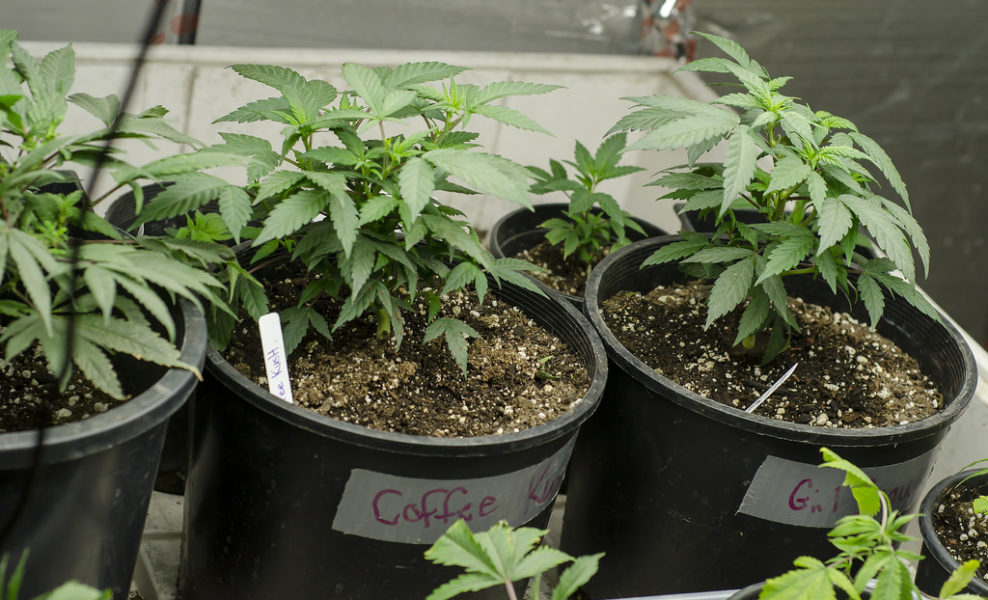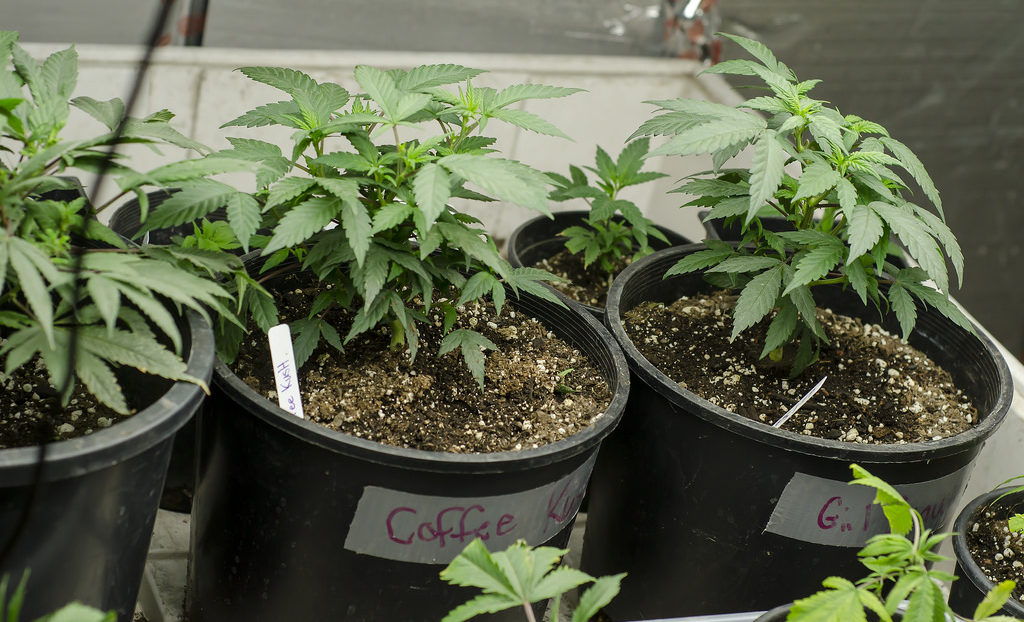
New legal pot laws in Canada and support for legalisation from Donald Trump may mark a seismic shift in global drug policy, and a conclusive end to the war on drugs. But how would cannabis legalisation or decriminalisation affect the workplace? What would your liabilities be as an employer in an area where drug use is more likely to occur, and how do you delineate legal private use from the dangers of working while high?
Cause and effect
Recent history has trended towards cannabis legalisation, or at least a softening of laws around cannabis. More than half of all US states have now legalised cannabis for recreational or medical use, while Canada is widely expected to legalise the drug for recreational use imminently. While such a shift in the UK is only likely to be evidence-based and following numerous other countries ‘experiments’ – the current Conservative government has been entirely unwilling to reappraise the drug – it is worth considering the repercussions, particularly as the use of cannabis in the UK appears to be on the rise. What are your liabilities as an employer in a world where this potent drug is freely available?
The legalisation of cannabis is not without controversy, but comes on the back of increasing scientific evidence of its relative safety. Studies have confirmed its efficacy as a treatment for a number of medical conditions, and it is believed that the toll on health services would be significantly lower than that of alcohol, a comparative legal substance. However, the negative effects of cannabis are also undergoing continued research. Evidence suggests that teenage pot use may impair the natural wiring of the brain, and cannabis has been proven to trigger schizophrenia and bipolar disorder in a small percentage of people.
Consider its effects within the working environment, however, and the evidence paints a different picture. The short term effects of cannabis will vary depending on tolerance, but it can make users sleepy, less attentive and more forgetful. Its impact on the work carried out by employees will range from a loss of productivity to a legitimate danger of serious damage to people and property. Its alleged effects as a means of self-medication for illnesses should not counteract this, and individual employees who claim to have a higher tolerance can not be treated differently on this basis.
Cannabis vs other drugs
It’s often said that cannabis is a ‘safer’ drug than alcohol, and the bulk of evidence supports this. To date, there have been zero deaths attributable entirely to cannabis use. By contrast, over 30,000 people die each year in the US from alcohol-induced causes, not accounting for deaths from negligence attributed to alcohol intoxication. Alcohol is also a recognised carcinogen, while smoking cannabis without tobacco is not believed to increase the risk of cancer.
Cannabis also appears to be less addictive than alcohol. 9% of participants in a large survey from 1994 went on to experience cannabis addiction, as opposed to 15% of alcohol drinkers. 17% of individuals who took cocaine, 23% of heroin users and 32% of nicotine users also went on to develop addictions, although the sample sizes and methodology here might come under question. Alcohol has also been proven to impair our moderation of social barriers, increasing aggression in some people. This has not been attributed to cannabis.
This is not to say that cannabis has no negative connotations. Heavy use can impair our memory, attention span and planning, although the same is true of alcohol; both drugs can also exacerbate mental illness. Cannabis also speeds up our heart rate, whereas alcohol slows it down. Weed doesn’t necessarily make you fat, however: despite the stereotypes, binge drinkers tend to put on more weight than you’d get from ‘the munchies’.
Drugs in the workplace
Drug use in the workplace is strictly illegal in the UK, excluding prescription medicines. Employees dealing with and stationed around vehicles are also not allowed to be under the influence, and the employer has a responsibility to act to prevent this. However, there is no explicit requirement to prevent drug use prior to work, other than overarching laws and guidelines on the fitness of employees and elimination of risks.
As such, it currently falls to employers to set their own standards in this area, and act according to the likelihood of substance abuse, any suspicions of this among the workforce, and the potential for harm this is likely to cause. We are likely to see more employers specifying that drug use is forbidden under any circumstances, or within a certain period before work. Businesses are well within their rights to make such demands, although this remains to be tested, and may be undermined or reinforced by legal precedents.
The HSE’s guidelines on drug and alcohol abuse have not been updated since the 1990s, but remain broadly relevant. This may change however were marijuana to become more prevalent, as the effects can linger for longer than alcohol, and occasionally be less obvious. Some employers would doubtless wish to eliminate this risk, and enact drug testing, something which is already common practice among large employers in the US.
North America tends to have a stronger climate of litigation and more onus on the responsibility of the employer than other nations, as opposed to the criminal liability of the employee. However, drug testing is still a part of many industries with elevated risks and hazards, and the free availability of drugs has become a common element of every health & safety risk assessment.
Drug testing and common sense
The issue here is that the testing procedure for marijuana is broadly inadequate. The active substance in the drug, THC, has been proven to remain in the user’s system long after its psychoactive effects have worn off. For a first time user, this may only be three to four days, but a long-time user may still test positive two months after having used the drug. The potency of the strain of marijuana will also have an effect on the duration THC shows up for, but not necessarily the duration of its effect.
This presents a dilemma: do you issue a blanket ban on a legal substance, simply because the user’s spatial and cognitive abilities could be impaired? Do you trust that the worker will not use the substance in a dangerous manner, and ignore or avoid the faulty tests? Or do you instigate a policy of observation, where any suspicion of recent use which might impair their ability to work is reported on sight?
Companies in the US have already faced this issue, with decidedly mixed results. While some have opted to continue enforcing a ‘zero tolerance’ policy, this has had a dramatic impact on their ability to make new hires, with a large proportion of applicants to one business in Colorado (where recreational use is legal) testing positive for the drug. On the other hand, a business fired a worker involved in a minor accident who had tested positive for THC; yet he was later reinstated after legal action, as they were unable to conclusively prove that the substance contributed to the incident.
Rising consumption in the US has already been reflected in workplace drug testing. Positive drug tests for cannabis in the U.S. workforce as a whole increased 14.3 percent between 2013 and 2014, with the first legalisation occurring in 2012. In Colorado specifically it rose 20 percent between 2012 and 2013, as well as rising by 23% in Washington State. According to the Monitoring the Future survey, over 35% of 17-18 year olds had used cannabis between 2015 and 2016.
UK approach
While many US states have opted to legalise cannabis, it remains an illegal Class 1 drug at federal level, the highest possible rating. A similar stance has been taken to date by the UK government, where the drug was moved back up from a Class C to Class B classification in 2009, the second highest rating.
The UK is the world’s largest exporter of cannabis for medical and scientific use, but its use is highly restricted in almost all forms, including medical applications such as cannabis oil. However, some UK police forces have openly admitted that cannabis is not a high priority in the wake of funding cuts. Despite this, there is currently less of a legal mandate to actively police drug use in UK workplaces. Under present laws, employers must:
- Not knowingly permit the production, sale or use of drugs in the workplace
- Exercise all due diligence to avoid drivers being unfit through drug use
In other words, UK policy relies on the taking of reasonable steps to ensure drugs are not being used on site. The definition of reasonable steps will differ depending on the work being carried out, including the nature of the risks involved and the people being put at risk. Drug testing is relatively uncommon, but when practised must be completely random, and limited to employees with a genuine need to be tested. Employees may refuse, but can also face disciplinary action for doing so.
The identification of drug use requires a more active role in protection that the provision of safety gear, for example, or the implementation of best practices. It is possible, and more likely in the UK than US, that the criminal burden of any actions taken while on drugs will fall on the user. This is not a hard and fast rule, however, particularly as drug use in the workplace tends not to be a one-time occurrence, and tends to be preceded by obvious warning signs.
Defining a policy
Cannabis legalisation could change this culture. Whether or not consumption rises, it’s likely that more people will feel able to report their cannabis use. This statistical boost and the publicity around legalisation would likely raise awareness among businesses, and lead many to introduce testing for higher risk industries, such as construction and HGV driving. Whether or not the advice of the HSE moves to address this, it would be sensible for businesses to take the precaution where they feel it is appropriate, or where mandated by safety professionals.
The most important step will be to define a clear drug testing policy. Businesses should be well within their rights to enforce a no tolerance policy, particularly if they have a clear safety mandate to do so. Businesses in other industries with no clear safety mandate, such as the creative industries, may choose not to, but productivity should also be a legitimate factor.
If there is an area of uncertainty, it is in regards to employees with legitimate medical grounds for cannabis use. These cannot be seen to override safety concerns, but you may wish to accommodate them elsewhere within the business if possible. As long as you’ve outlined and publicised your policy to all current and prospective workers, however, you should be well prepared for this cultural shift.
—
SAMS is a leading provider of safety consultancy services for businesses. To find out more about our Bronze, Silver, Gold and Contractor membership tiers, visit our Consultancy page.

